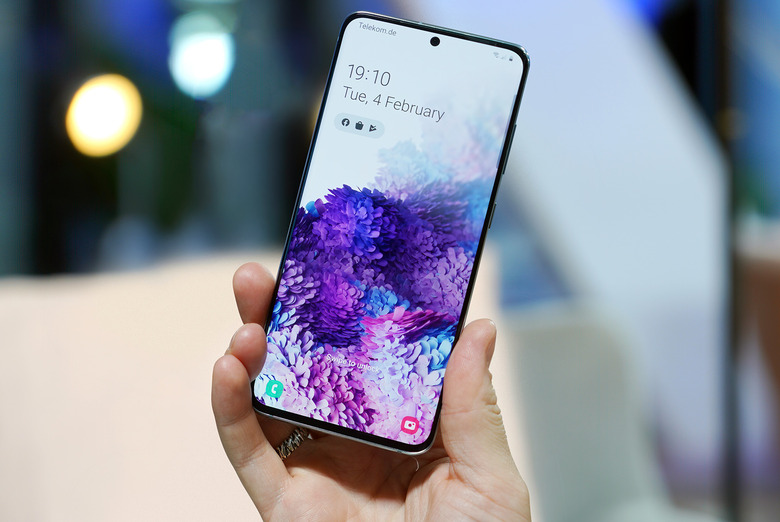Galaxy S20's Best Feature Is A Big Drain On The Battery, But It's Totally Worth It
The Galaxy S20 series is available for preorder in several markets, and you can already test it out in stores, if you need hands-on experience with a new phone before buying it. That means you can feel for yourself the new design, test the cameras, and check out the 120Hz refresh rate, a signature Galaxy S20 feature that should make improve your entire Android experience. What you won't be able to see in stores is battery life, and, specifically, whether the 120Hz screen will have a significant impact on it. Others, however, were able to put the S20 through battery tests, and the first Galaxy S20 Ultra battery tests are already here. Yes, the 120Hz screen will consume a lot of battery juice, but you shouldn't even worry about it.
The S20 Ultra with the screen set at the default 60Hz lasted nearly 12 hours in Tom's Guide test, while the 120Hz S20 Ultra died after nine hours and 13 minutes. The blog used exactly the same test for both scenarios:
We put the Galaxy S20 Ultra through our battery test four times, which involves continuous web surfing over cellular (in this case T-Mobile 5G) at 150 nits of screen brightness. Two of the tests were run with the display set to 60Hz mode, and two were in 120Hz mode.
Yes, we're looking at a difference in battery life of more than three hours, but 9:13 hours of battery life is still amazing. Let's not forget the Galaxy S20 Ultra comes with a huge 5,000 mAh battery under the hood, which supports 45W fast charging. There's no point in denying yourself that 120Hz experience to save battery life. A few minutes of charging the phone will be enough for it to last you through the day. And if you have wireless charging pads at home or at the office, you can use those to top the battery up whenever you're not using the device.
If you really need to save battery at all costs, you can always switch to 60Hz, and only use the 120Hz setting for certain content, like while you're playing games or browsing the web.
The smaller Galaxy S20 and Galaxy S20+ aren't included in this test, but both devices support 120Hz panels. They have smaller batteries, however, at 4,000 mAh, and 4,500 mAh, respectively, and both only support 25W fast charging. They also feature smaller displays than the Ultra, which means you shouldn't expect the same battery usage difference between 60Hz and 120Hz. But everything I said about the Ultra still applies to the S20. You should get more than decent battery life from the phones without having to sacrifice that 120Hz experience.
Tom's Guide test does explain why neither S20 version supports 120Hz at max resolution, and why you have to settle for Full HD if you want 120Hz: battery life would probably take an even bigger hit. But Samsung is supposedly considering adding a Quad HD+ 120Hz mode to the S20 series in the future.
